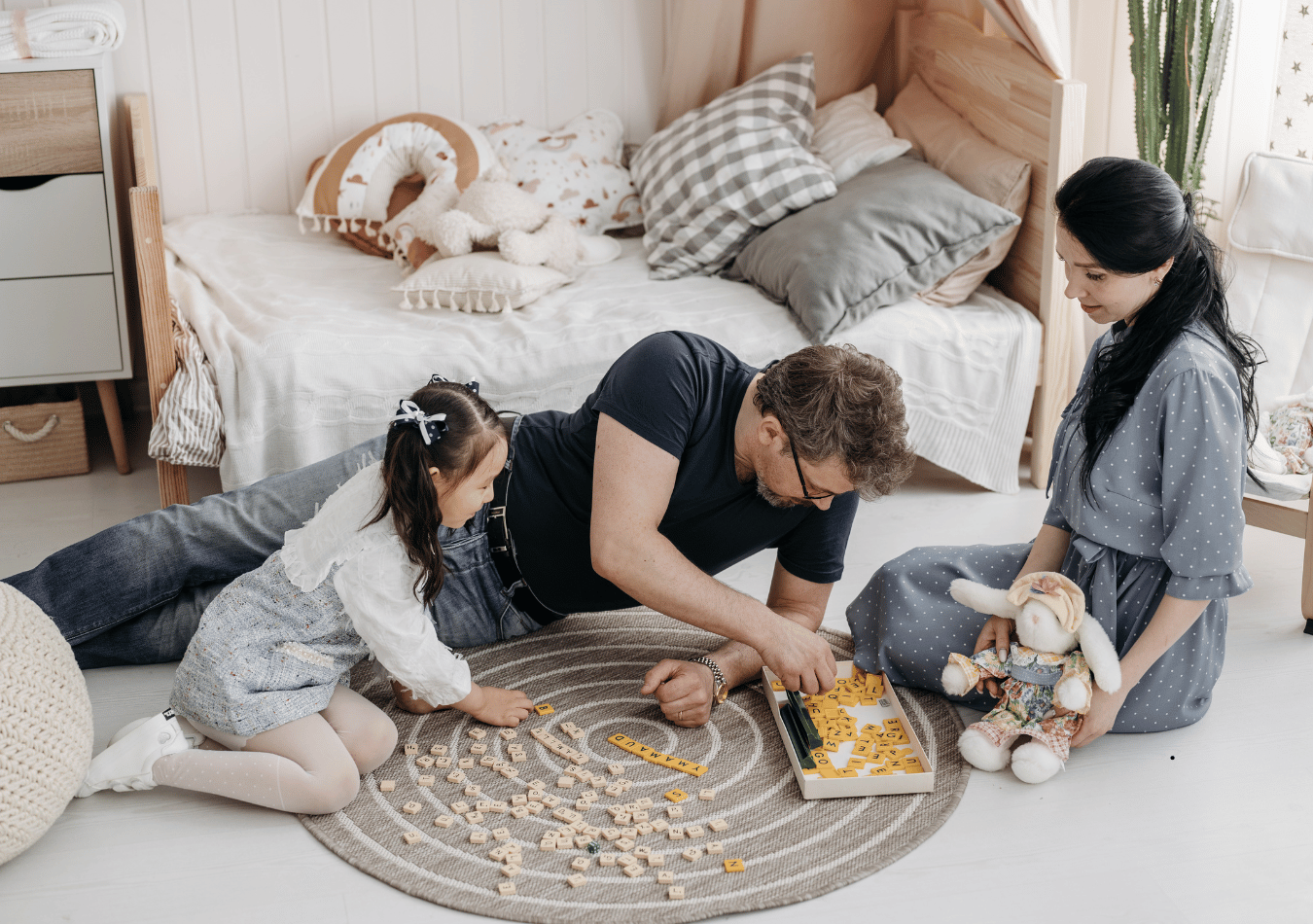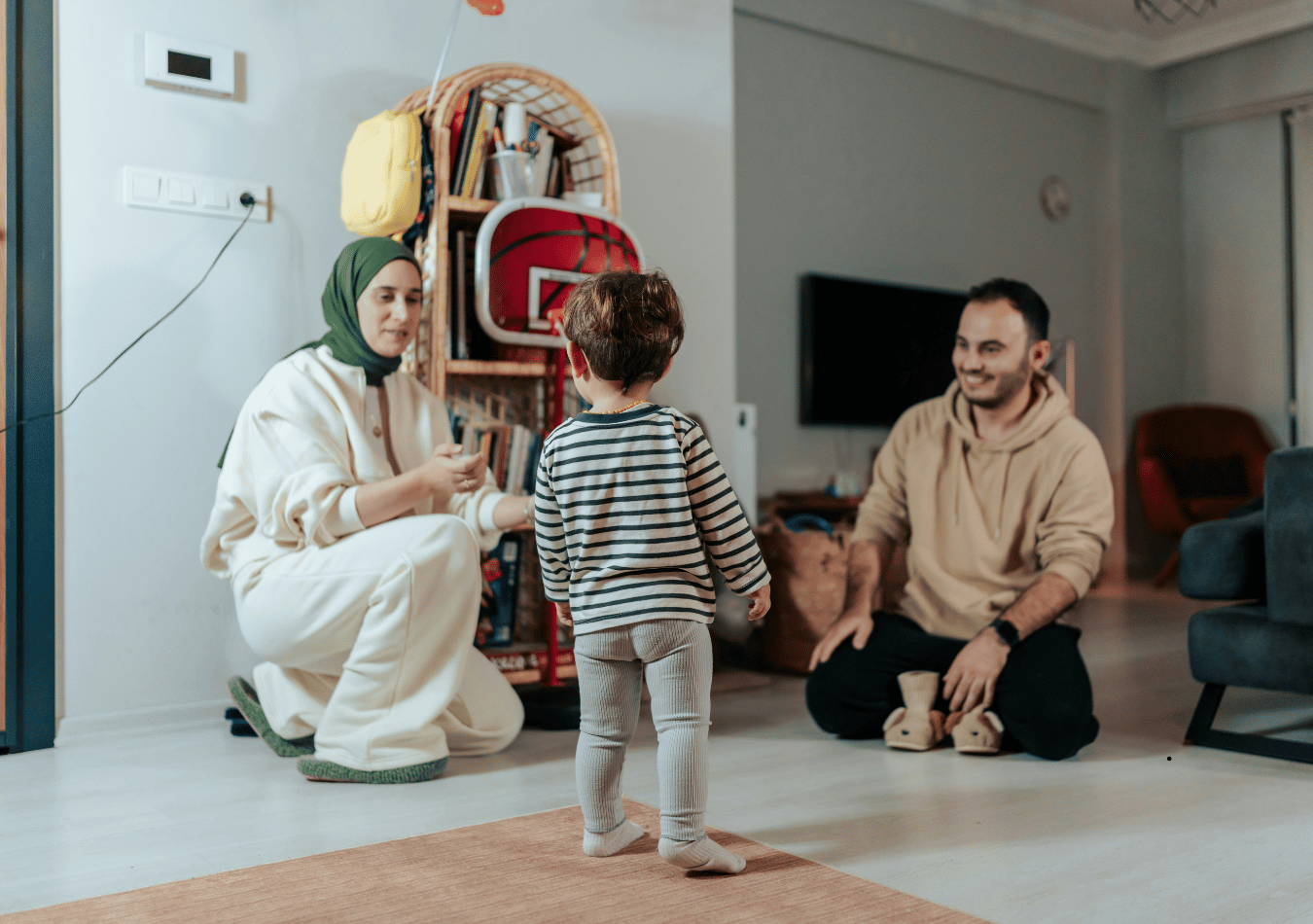Does your child struggle to express their emotions? Maybe you’ve noticed changes in their behavior or difficulty navigating social situations. At Love Play Grow, we understand that helping children process their inner world can be a challenge. That’s where play therapy comes in.
Play therapy is a powerful tool that utilizes the natural language of play to help children explore their emotions, develop coping mechanisms, and heal from difficult experiences. As a leading play therapy and professional counseling boutique in Morris and Union County, New Jersey, Love Play Grow offers a warm and welcoming environment where kids can feel safe to express themselves freely through the power of play.
In this blog post, we’ll break down what you need to know about this therapeutic approach and share some of our favorite child play therapy techniques that you can try with your little one at home today.

Understanding play therapy
Play therapy might seem like unstructured playtime, but it’s actually a specialized form of therapy conducted by a trained mental health professional.
During play therapy sessions, your child will have access to a carefully curated playroom filled with toys, games, and creative materials. These tools become a springboard for exploration, allowing your child to express themself in ways that talking might not.
There are two main types of play therapy used by therapists: directive and nondirective.
In directive play therapy, the therapist will gently guide your child toward specific activities that target particular goals. For example, a play therapist might use puppets to help a child struggling with social anxiety practice communication skills.
In nondirective play therapy, your child takes the lead, choosing the toys and games they want to play with. The therapist observes their choices and how they interact with the materials, gaining valuable insights into your child’s inner world.

When does my child need play therapy?
Many children experience challenges that can be addressed through play therapy. Here are some common signs that your child might benefit from play therapy:
- Changes in behavior or mood: This could include increased anger outbursts, sadness, withdrawal from social activities, or difficulty sleeping.
- Difficulties at school: Is your child struggling to concentrate in class, having trouble making friends, or experiencing academic problems? These could be signs of underlying emotional issues that play therapy can help address.
- Communication difficulties: Does your child have trouble expressing their feelings verbally? Play therapy provides a safe space for them to communicate non-verbally through play.
- Life transitions: Divorce, a new baby, or a move can be stressful for children. Play therapy can help them adjust to these changes and process any difficult emotions they might be experiencing.
- Trauma or stressful events: Children who have experienced trauma, such as bullying, abuse, or the loss of a loved one, can benefit from the safe and supportive environment of play therapy to process their experiences.
It’s important to note that this list is not exhaustive. If you have any concerns about your child’s emotional well-being, schedule a consultation with one of our expert play therapists to determine if play therapy is the right fit for your child.

8 therapeutic play activities for kids (with examples)
Play therapy uses a variety of engaging activities that cater to a child’s unique needs and preferences. While play therapy is most effective when conducted by a trained professional, some of these activities can be adapted for use at home with your child.
Here’s a glimpse into some of the common activities you might encounter in a play therapy session at Love Play Grow, categorized by type.
Creative activities
1. Sandplay therapy
Kinesthetic play with sand allows children to create scenes or stories symbolically, expressing themselves and processing emotions that might be difficult to verbalize. This can be particularly helpful for children who struggle with verbal communication.
- Example: A child who is anxious about starting a new school might create a sand tray scene depicting a classroom and act out positive interactions with classmates using miniature figures.
2. Art therapy (drawing, painting, sculpting)
Similar to sandplay, art therapy can be easily incorporated at home. Offer your child a variety of art materials and encourage them to create something that represents how they’re feeling. Discuss their artwork together, but avoid interpreting their creations for them.
- Example: Ask a child struggling with anger to draw a picture of their “angry monster” and then discuss what makes the monster angry and how to calm it down.
3. Story writing and storytelling
Create stories together with your child! You can take turns adding sentences to a story, create a comic strip together, or act out a story you’ve read together. Storytelling can be a fun and engaging way for your child to explore emotions and navigate difficult situations.
- Example: Read (or create) a story about a character who experiences a loss and then encourage the child to create their own ending, helping them explore themes of grief and coping.
Dramatic play
4. Role-playing games (pretending to be doctors, firefighters, characters)
Encourage your child to dress up and pretend! Role-playing games allow children to experiment with different social roles and work through real-life challenges in a safe and controlled environment. You can participate in the role-playing or simply provide props and costumes and let your child’s imagination take flight.
- Example: Set up a pretend doctor’s office and encourage a child who is anxious about going to the doctor to role-play being a patient and a doctor, helping them become more familiar with the medical setting.
5. Puppet Play
Puppets can be a great tool for children who have difficulty expressing themselves verbally. You can create simple puppets together using socks, paper bags, or other household items. Then, let your child use the puppets to tell stories or act out situations that might be challenging for them.
- Example: A child who is afraid of the dark might use a puppet to express their fear. From here, you can work together to brainstorm coping mechanisms for bedtime, such as using a nightlight or creating a relaxation routine.
Expressive play
6. Building and construction activities (blocks, Legos, other materials)
Building activities can help children develop problem-solving skills and explore themes of control and mastery. Provide your child with building blocks, Legos, or other construction materials and encourage them to create something they’re proud of.
- Example: Provide your child with Legos and challenge them to build a safe space, helping them explore feelings of security and control.
7. Music therapy
Music can be a powerful tool for emotional expression and regulation. Play calming music for your child when they’re feeling anxious or create songs together about their emotions. You can even move and dance to the music together!
- Example: You can also create songs with your child about their emotions to help them express themselves in a new way.
8. Games (board games, card games, other structured play)
Playing board games (or other kinds of games) with your child is a great way to bond and have fun, while also helping them develop social skills and learn to take turns. Choose games that are appropriate for your child’s age and developmental level.
- Example: Play a cooperative board game with a child to teach them teamwork and communication skills or use a card game to help them practice taking turns and managing disappointment.
Important Note: While these activities can be beneficial at home, they are not a replacement for professional play therapy. If you have concerns about your child’s emotional well-being, a consultation with a licensed therapist can help determine if play therapy is the right fit for your child.
Remember, the most important thing is to create a safe and supportive space for your child to play and express themselves.

Final thoughts on unlocking the power of child-centered play therapy
Play therapy offers a unique and effective approach to helping children navigate their inner world. Through engaging activities tailored to your child’s individual needs, play therapy can:
- Empower children to express themselves freely
- Help them develop healthy coping mechanisms
- Improve communication and social skills
- Address emotional challenges and promote emotional well-being
If you’re looking for ways to support your child’s emotional health and development, consider play therapy. At Love Play Grow, our team of skilled and compassionate mental health professionals can create a safe and welcoming space where your child can heal, grow, and thrive through the power of play.
Ready to take the first step? We offer free consultations to discuss your child’s needs and answer any questions you might have about play therapy. Contact Love Play Grow today to schedule a consultation and see which services are the right fit for you and your family members.










